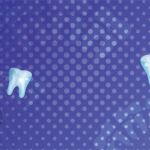Sleep Apnea Syndrome 101
A potentially life-threatening disorder, obstructive sleep apnea syndrome is a complex condition.
In this article, Calgary orthodontists Dr. Antosz and Dr. Vincelli offer you a first step in understanding what it is, who’s at risk, and why.
What is Obstructive Sleep Apnea Syndrome (OSAS)?
Definition: Apnea—”the arousal of breathing for 10 seconds or more. It is a full obstruction of the airway when a person is asleep.” In this case, arousal means that the sleep moves from a deeper level of sleep into a more ‘awake’ one. (source)
In OSAS, the sleeper’s upper airway becomes partially or fully blocked. Thus, the amount of air entering the lungs is reduced—or even completely stopped for a number of seconds. The result is lower than required levels of oxygen in the blood.
More than just lower oxygen levels at night, OSAS increases a person’s chances of heart-related issues (heart disease, heart arrhythmias, heart failure), high blood pressure, and stroke.
Who is most at risk?
- Guys, unfortunately, it’s you (3-7%), with the gals a little less (2-5%).
The reasons? The hormone testosterone reduces effective respiration (breathing). Also, men’s pharyngeal and supraglottic airways (the sections in the mouth and throat) are more resistant than those of women. In other words, they don’t let air in as easily.
- Those who are middle-aged are more likely to have OSAS than other ages. This is because the elasticity of our tissues and the functions of our pulmonary (lungs) and cardiovascular (heart) systems are less effective as we get older.
However, Dr. Antosz and Dr. Vincelli have dealt with pediatric and adolescent clients who suffer from this condition.
- Weight is another issue. Those who are overweight have more fat around their soft palates. So, there is less space for air to pass through.
- Drinkers and those on sedatives are at higher risk. When we sleep on our backs, the genioglossus and tensor veli palatini muscles work less. (These muscles are in the soft palate, which is the back of the roof of the mouth.) The less they work, the smaller our airway. Alcohol and sedatives make these muscles work even less.
Fortunately, Calgary orthodontic dentists such as Dr. Antosz and Dr. Vincelli can expertly help patients with OSAS.

Don’t forget to follow us on Instagram!


